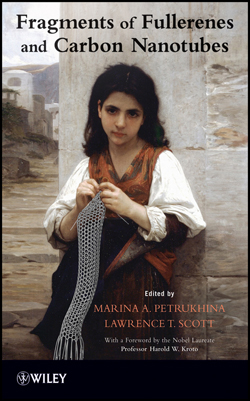|
|
Vol.
35 No. 3
May-June 2013
In the context of fullerenes and carbon nanotubes, a recent monograph that discusses the de novo syntheses of defined non-planar polycyclic aromatic hydrocarbons and their physicochemical properties deserves attention. The editors, M.A. Petrukhina and L.T. Scott, both accomplished experts in this area of hydrocarbon research, have gathered 14 contributions by 35 authors to highlight a dynamic and rapidly evolving field to the broader scientific community.
 |
The book, with nine chapters on fullerene fragments and five chapters on carbon nanotube segments, provides a broad introduction to these non-planar aromatic hydrocarbons, while thoroughly discussing synthetic strategies toward the various (unusual) target compounds. Each book contribution highlights unique structural features, ingenious experimental approaches, individual reactivity patterns, as well as guiding theoretical investigation: The reader encounters the intriguing chemistry of molecular tweezers with corannulene pincers (i.e., the buckycatcher), before venturing into the versatile eneyne-allene-driven preparation of bowl- and basket-shaped hydrocarbon fragments. The rich structural variety and chemical behavior of reactive buckybowl intermediates (radicals, radical anions, anions) is covered in several chapters. A perspective on the organometallic chemistry of σ- and π-bonded metal complexes of corannulene, sumanene, and corresponding derivatives broadens the perspective even further. As the journey through this world of hydrocarbons continues, hemispherical geodesic polyarenes set the stage for a transition to carbon nanotube fragments. Thus, the last five book chapters conclude the excursion into this exciting world of non-planar polycyclic arenes with a thorough discussion of distinctly different routes to conjugated belt-shaped species (e.g., cycloparaphenyles, aromatic cyclacene belts).
The chapters are well written, and often combine an individual, sometimes historic perspective with a detailed “story” of the conceptual and experimental evolution. Many schemes, tables and figures support the narrative, while a usually extensive list of references directs the reader to the primary literature. A minor drawback to this fascinating collection of accounts is—on occasion—the varying quality of schemes, figures, or images (e.g., a second, enlarged edition might choose a uniform format for molecule depictions in synthetic schemes, replace the grey-scale depiction of X-ray structures or electrostatic potential maps and improve the resolution of some images or spectra).
Despite the many exciting papers published since this book became available in 2012, this monograph will be a valuable addition to any library, an enjoyable page turner for aficionados of hydrocarbon chemistry, and a treasure trove for advanced students of organic chemistry.
www.wiley.com/WileyCDA/WileyTitle/productCd-0470569085.html
Page
last modified 20 May 2013.
Copyright © 2003-2013 International Union of Pure and Applied Chemistry.
Questions regarding the website, please contact [email protected]
|